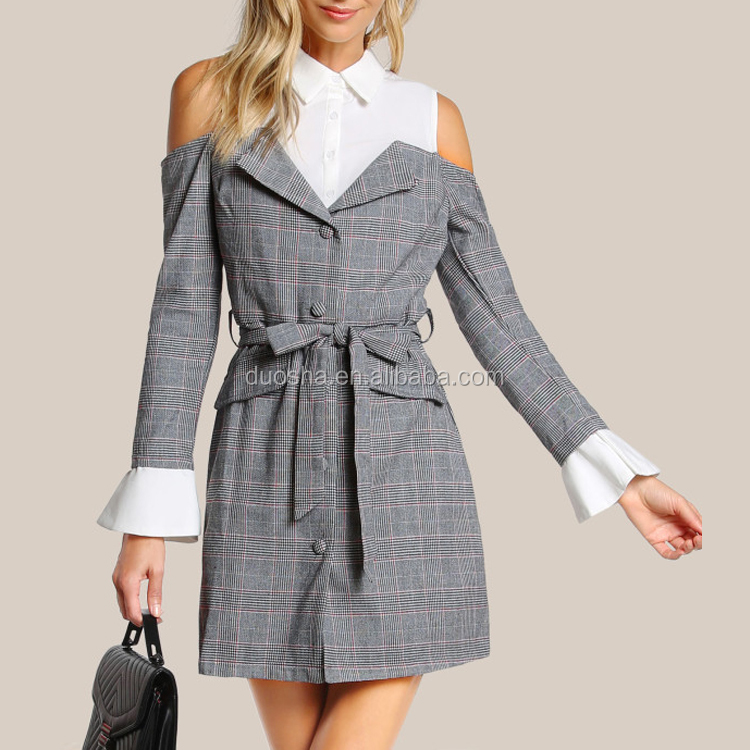English Title: Shirt Collars and Tie Styles: A Fashion History
This essay explores the history of shirt collars and tie styles in fashion. It examines how these elements have evolved over time, from their origins in ancient Greece and Rome to their development in the modern era. The essay also considers the cultural and social significance of these fashion elements, as well as their impact on overall fashion trends. Finally, it concludes by noting that the shirt collar and tie style are not just about fashion, but also about expressing one’s individuality and personal style.
Throughout history, shirts and ties have undergone many changes in style and design. From the simple, practical designs of the early 20th century to the intricate patterns and colors of modern fashion, shirts and ties have become not just a necessary part of men's wardrobe but also a way to express one's personality and style. In this article, we will explore the history of shirt collar styles and tie designs, highlighting some of the most notable changes and influences along the way.
Early 20th Century: The Beginning of Fashionable Collars and Ties

In the early 20th century, shirts and ties were primarily functional pieces of clothing. The collars were designed to be simple and practical, often with a straight or slightly pointed shape. Ties were also relatively plain, with most being made from a single color or pattern. However, as fashion began to evolve, so too did the design of shirts and ties.
1920s and 1930s: The Rise of Stylish Collars and Ties
During the 1920s and 1930s, fashion began to embrace more elaborate and stylish designs. Collars became more varied in shape, with some becoming wider or more pointed. Ties also began to feature more interesting patterns and colors, often matching the overall style of the outfit. This era also saw the rise of the bow tie, which became a popular choice for both formal and casual occasions.
1940s and 1950s: The Return to Simplicity
During the 1940s and 1950s, fashion underwent a shift back towards simpler designs. This was partially due to the influence of World War II, which limited the availability of materials and resources for clothing production. As a result, shirts and ties became more basic in design, often featuring fewer patterns and colors. However, even during this period, there were still some notable fashion trends, such as the rise of the polo shirt and the popularité of striped ties.

1960s and 1970s: The Beginning of Modern Fashion
The 1960s and 1970s marked the beginning of modern fashion as we know it today. This era saw the rise of many new styles and trends, including those for shirts and ties. Collars became more varied in shape and size, with some becoming very wide or even oversized. Ties also featured more interesting patterns and colors, often matching or complementing the overall style of the outfit. This era also saw the rise of new materials being used for ties, such as silk and synthetic fibers, which allowed for more varied designs and colors.
Conclusion: The Evolution of Fashionable Collars and Ties
Throughout history, shirts and ties have undergone many changes in style and design. From the simple practical designs of the early 20th century to the intricate patterns and colors of modern fashion, shirts and ties have become not just a necessary part of men's wardrobe but also a way to express one's personality and style. As fashion continues to evolve, we can expect to see even more interesting designs and trends emerge in both shirts and ties.
Articles related to the knowledge points of this article::
Colorful Ties: A Guide to the Most Popular Styles
Title: Types of Knitted Tie Styles
Title: A Comprehensive Guide to Womens Blouses with Metallic Neck Tie Patterns
The Magnificent Style of a Tie
Title: Stunning Tie Designs from High-End Brands: A Guide to the Best Looks
Title: Mastering the Art of Tie Accessory Pairings: A Guide to Mens Tie Styles and Accessories



